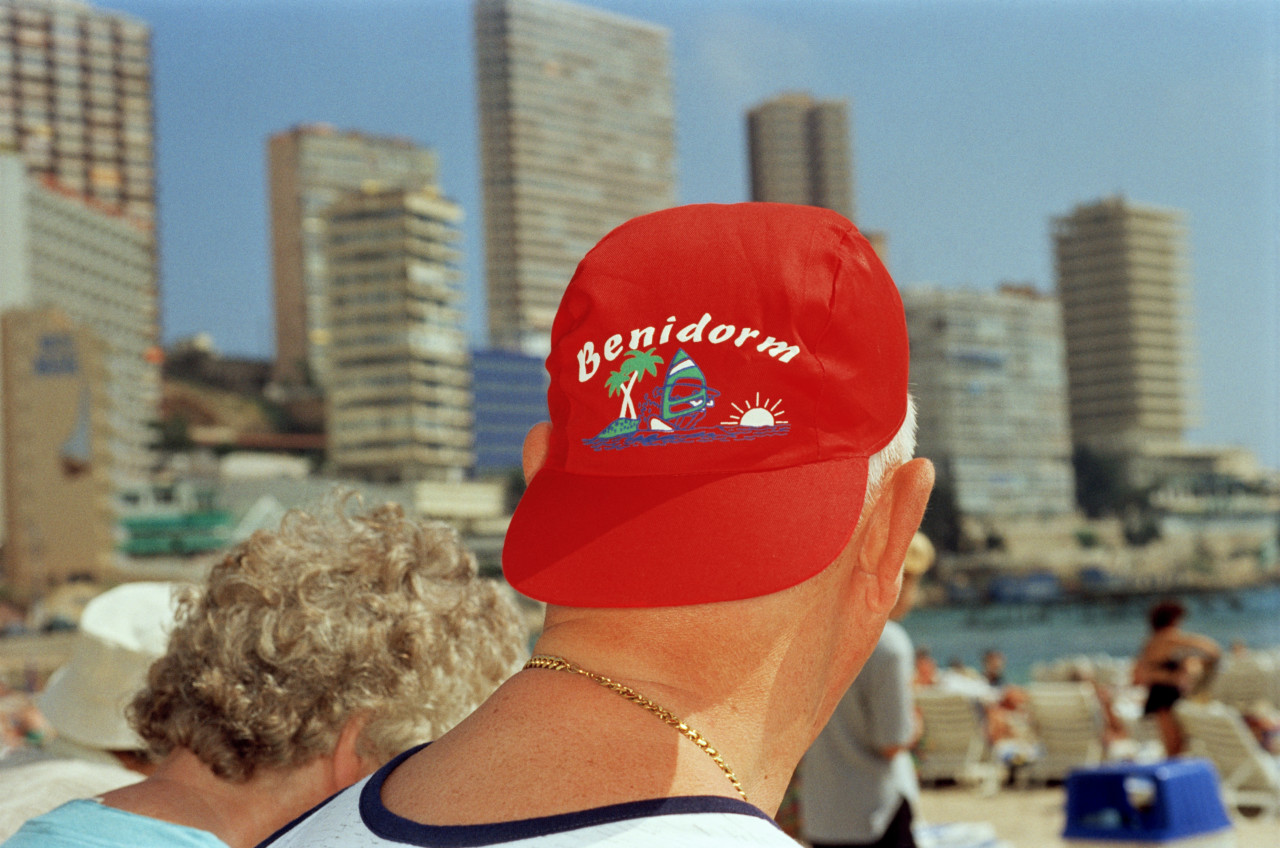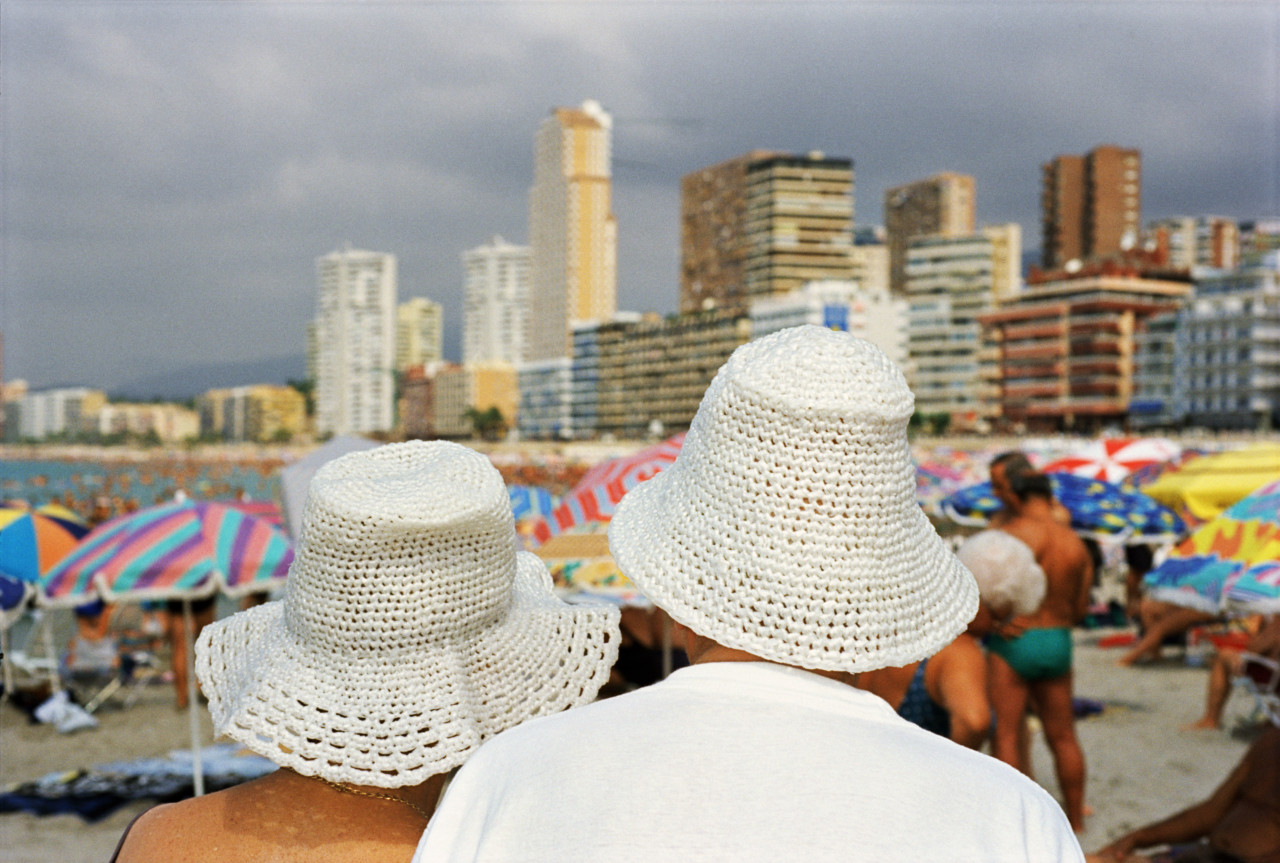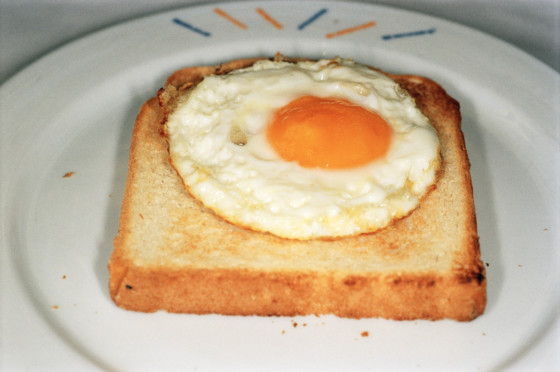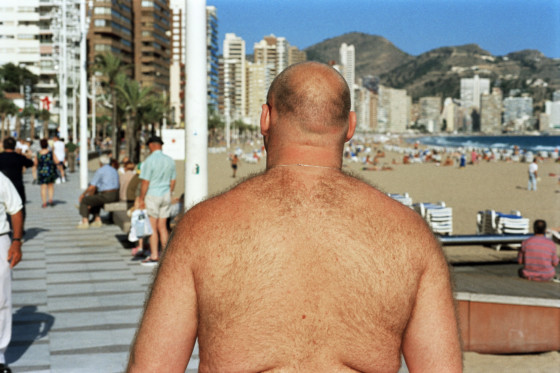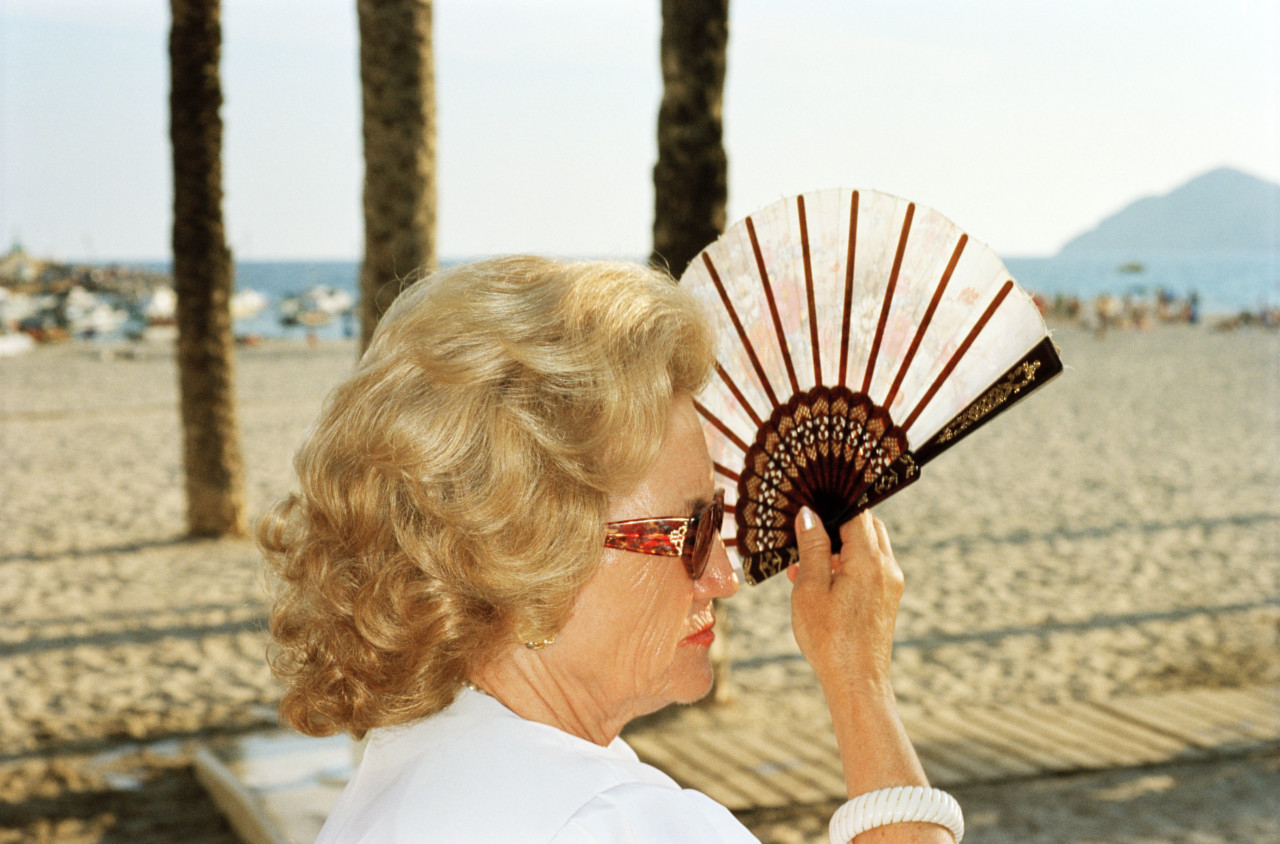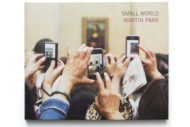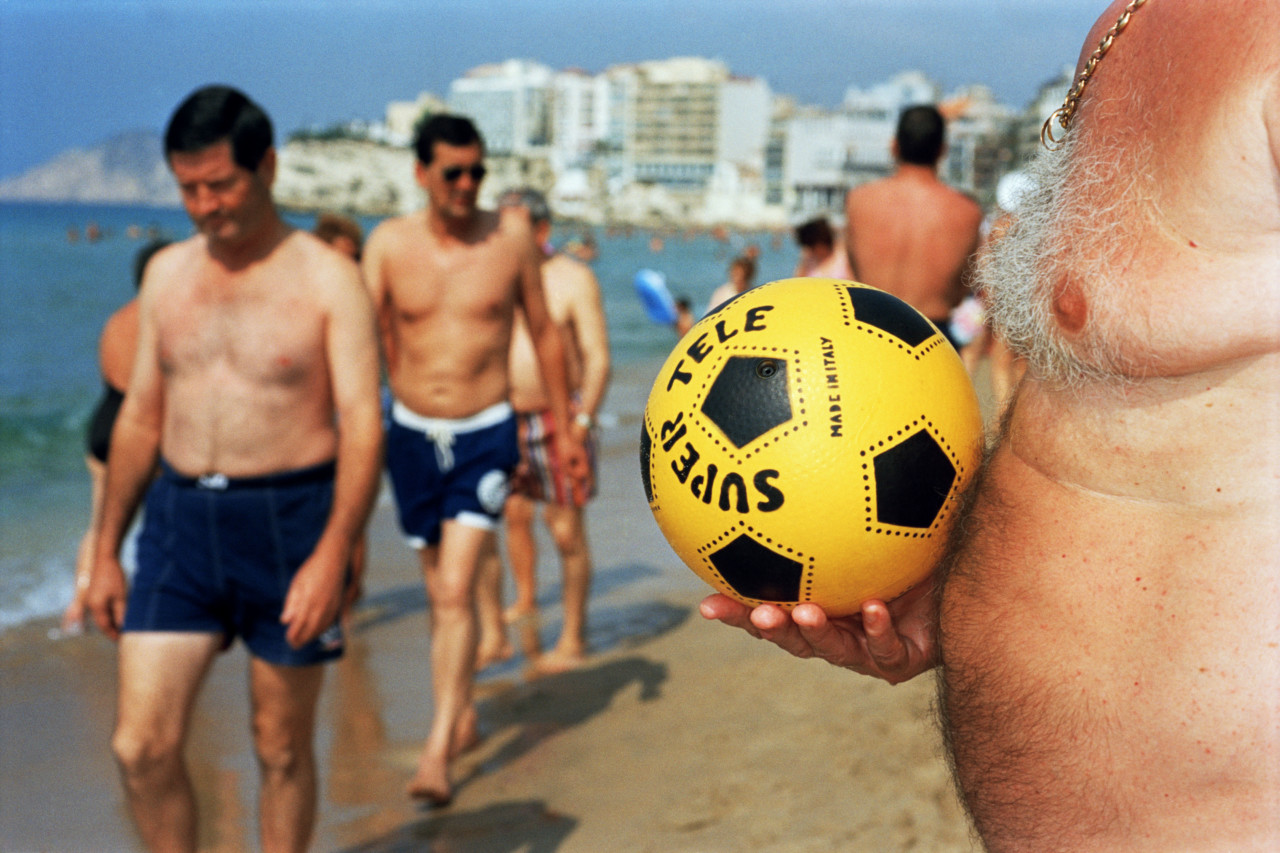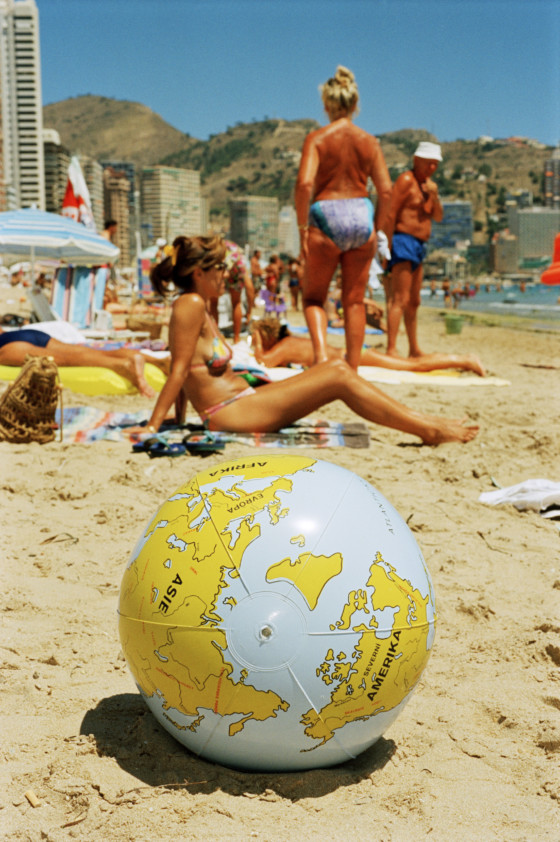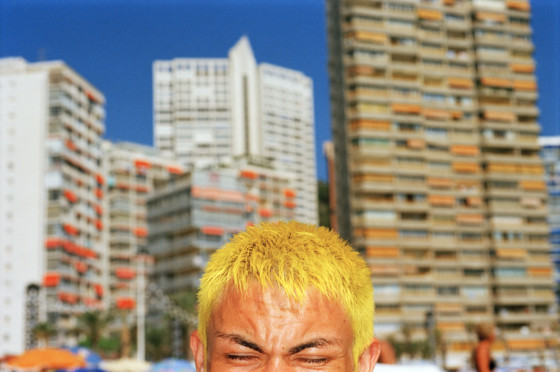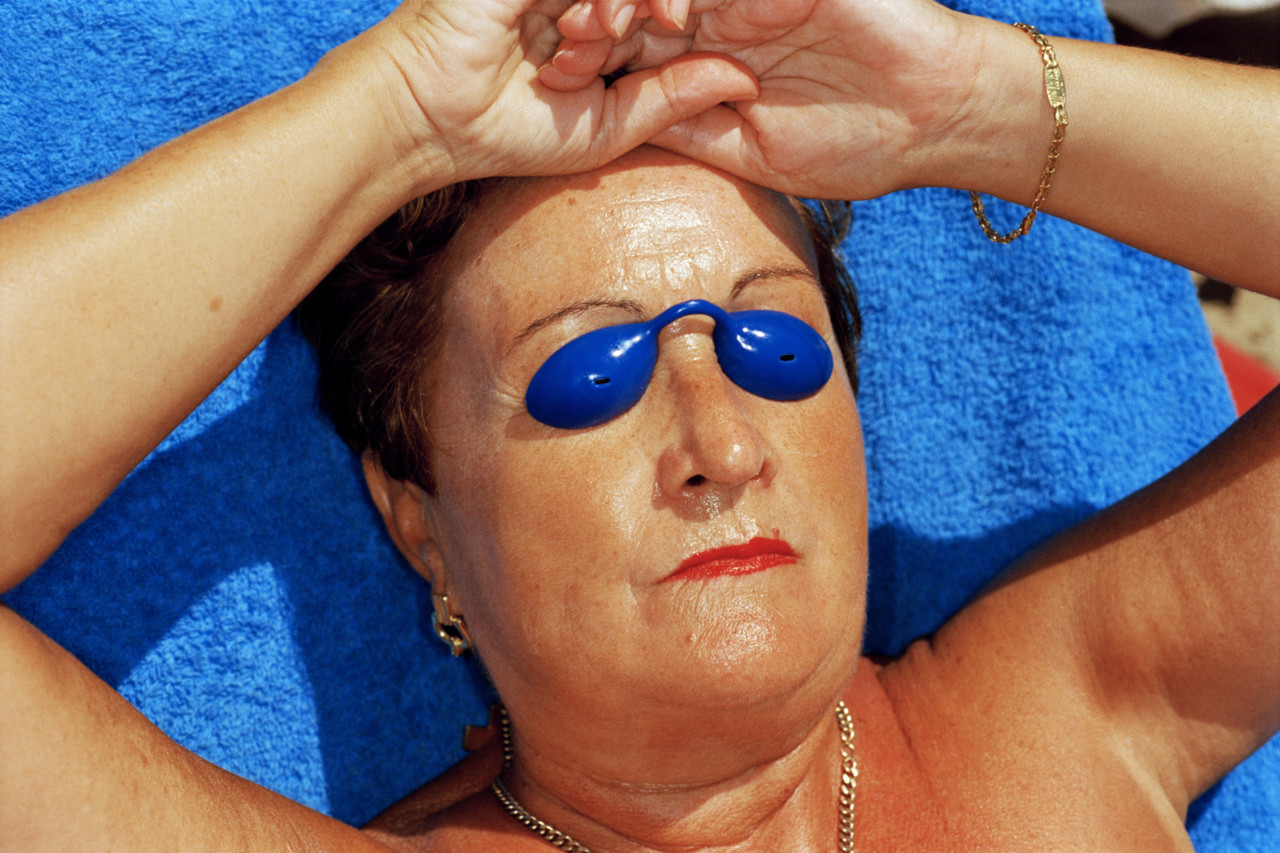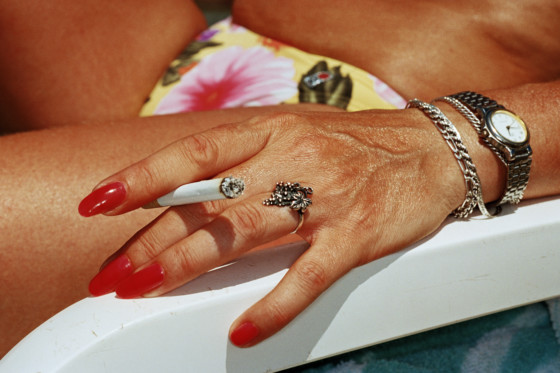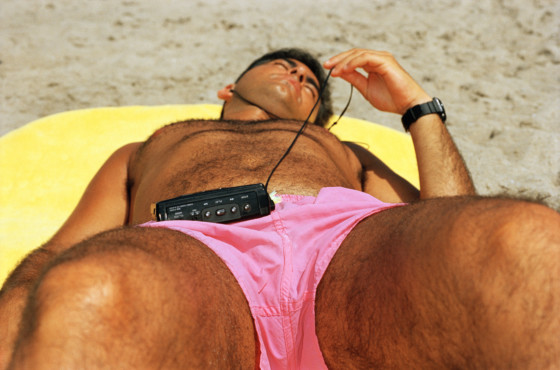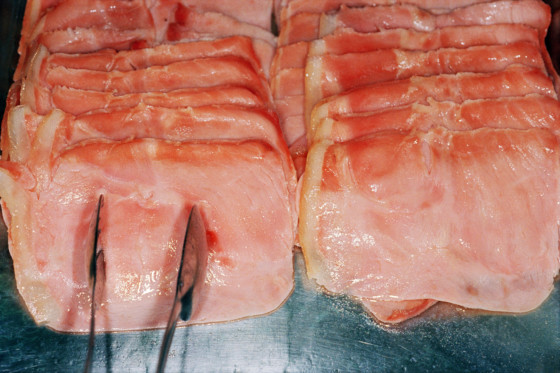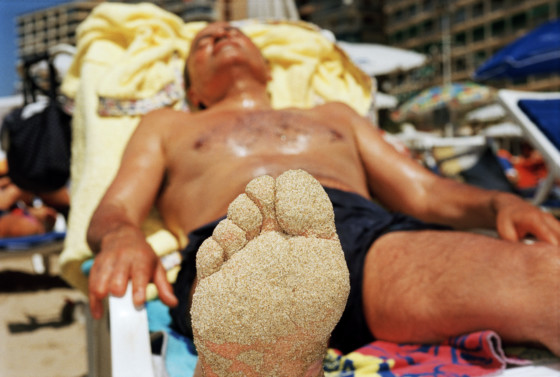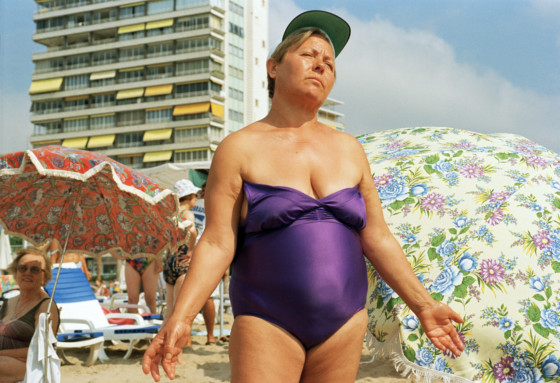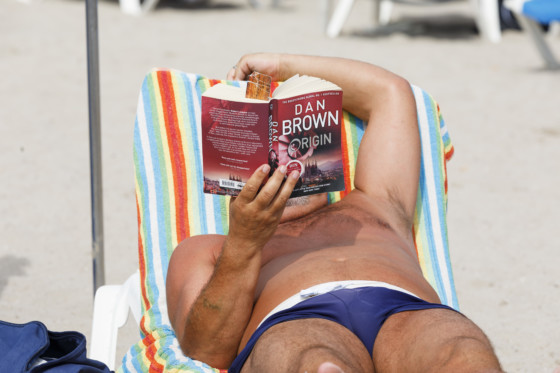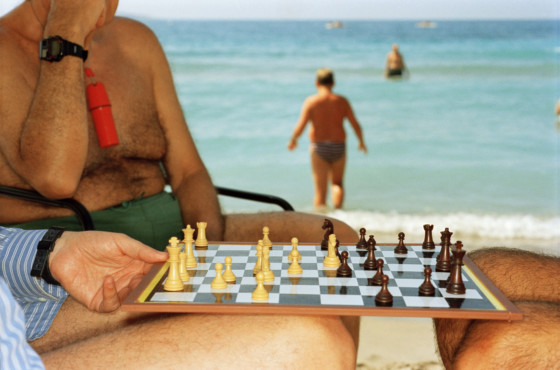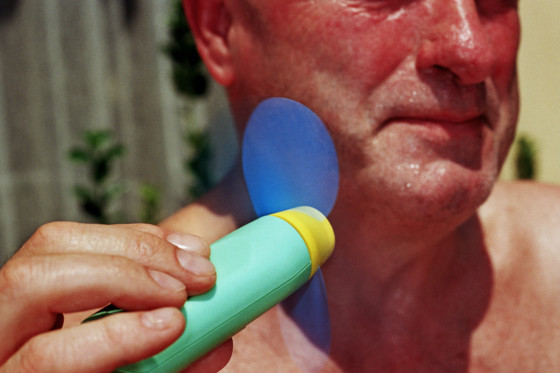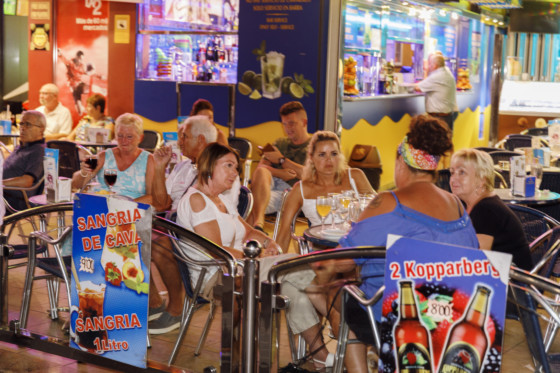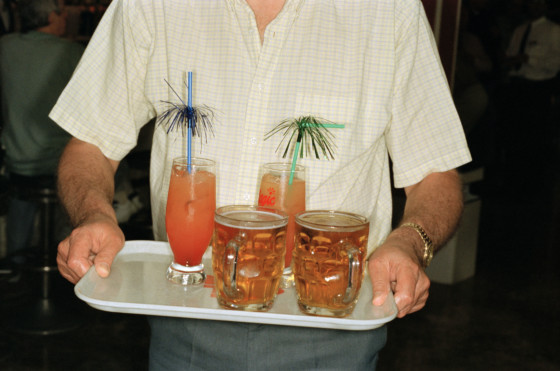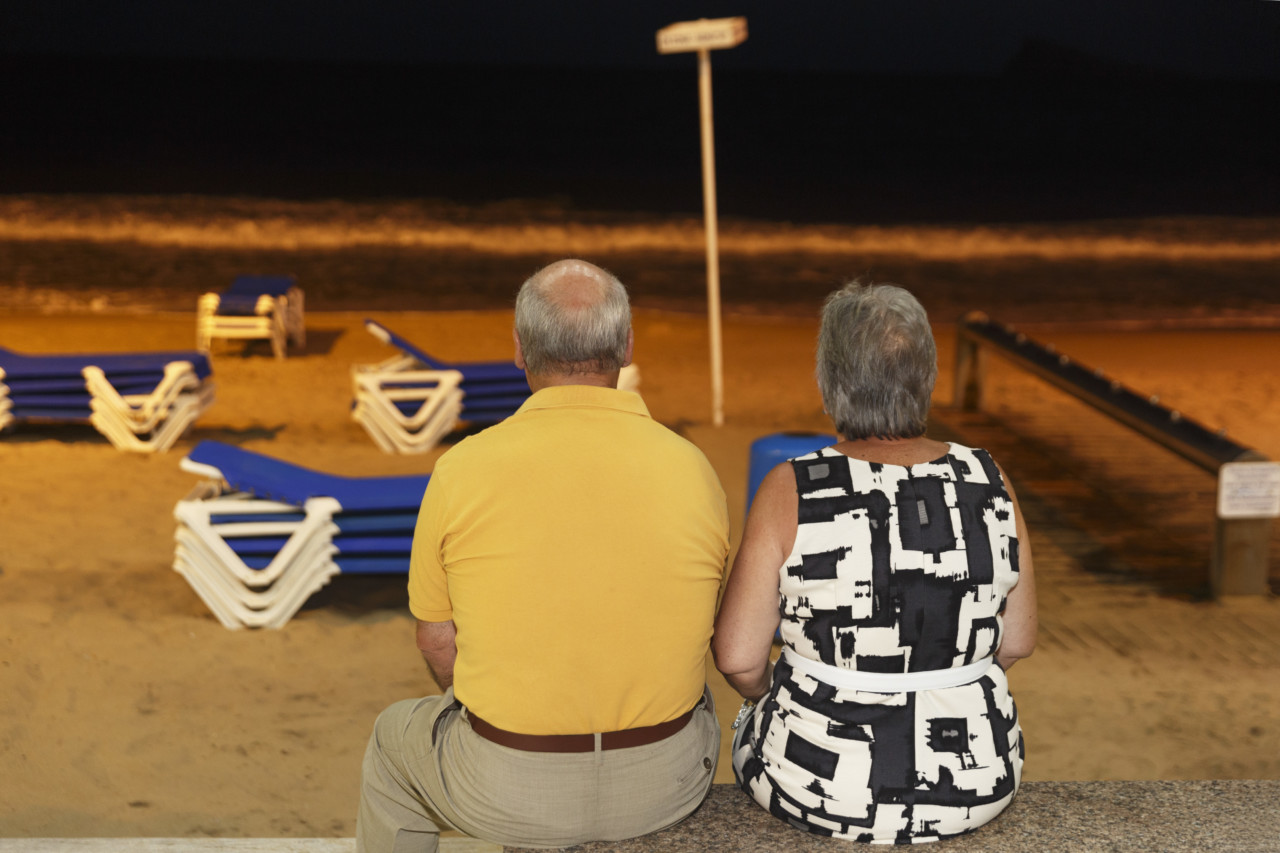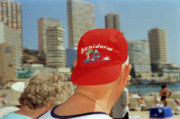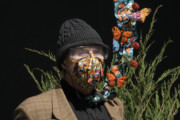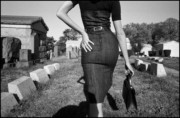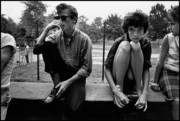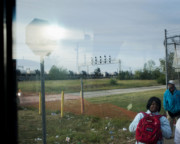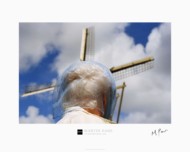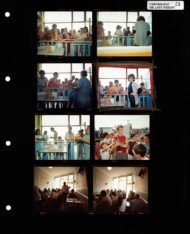Martin Parr’s Benidorm
Brits abroad, beaches and breakfasts – the Magnum photographer’s exploration of the Spanish holiday destination
Martin Parr has always found inspiration on beaches. Ever since his days as a photography student at Manchester Polytechnic in the 1970s, when he would make frequent trips to the seaside resort of Blackpool to take pictures, Parr has seen the beach as a playground for experimentation. Since then, he has ventured near and far to capture seaside scenes – from Cornwall to Cannes, Merseyside to Miami, to India, Russia, Japan and beyond – developing and honing new techniques along the way, and producing multiple series, books and exhibitions dedicated to beaches and their idiosyncratic dwellers. “The seaside has to be one of the most fascinating places for people-watching,” the photographer once told The Independent. “It is a place where we relax and lose our inhibitions, and that’s when true personalities come on display.”
But perhaps more than any other beach location, Benidorm – the vast, tourist-strewn seaside resort on the eastern coast of Spain – could be said to be Parr’s favourite. He listed it as one of his cultural highlights in an article for The Guardian last year, stating that “contrary to popular reputation, I believe it to be a very classy resort,” while in April of this year, he produced a gloriously colourful fashion story for Vogue España set in Benidorm, and titled – with unequivocal reverence – “I love Benidorm by Martin Parr”.
"The seaside has to be one of the most fascinating places for people-watching."
- Martin Parr
Parr first encountered Benidorm and its two parasol-punctuated beaches, which span seven miles of coastline, in 1997. “I loved it,” he recalls of his initial impression. “I think the impact it made on me when I first went was partially because I’d never seen such a busy, crazy resort. It was bigger, trashier, with more interesting people… everything about it was on a scale I hadn’t seen before. Of course, I love resorts anyway, so this was just mega.” He had planned the trip as a personal one, but secured a commission to shoot a book commission for Mercedes, to promote their Smart Car, which got produced at the same time. This led to what he has previously described as “several days of some of the most intense shooting of my life”, which resulted in some of his best-loved photographs.
Not long prior to the trip, Parr had purchased a macro lens and ring flash – a combination, he explains, that is usually associated with medical photography. This allowed him to focus in on small details in an almost forensic manner. “The ability to come in close really appealed,” the photographer has explained in a previous discussion with Magnum. “I started projects shooting close-ups of food and trying to isolate clichés associated with different countries.” He expanded upon this practice during his first trip to Benidorm. “I sort of fine-tuned this technique there,” he says, “applying it not just to food but to people on the beach and everything else, and it just lent itself brilliantly to working in that way.”
Unsurprisingly, the clichés Parr uncovered and documented in Benidorm are not solely Spanish: since the 1970s, Benidorm has, of course, been a favourite holiday destination of British tourists. The close-up of a Manchester United tattoo on a sunburnt young man’s arm; another, dedicated to “DEBBIE”, penned across a scorched back; a string of seven Union Jack flags, interspersed with one French and one Swedish banner, flying proudly before a Benidorm hotel all serve as telltale indicators of Brits abroad.
As with so much of Parr’s work, his photographs of Benidorm’s beachgoers and their surrounding environs do not combine to proffer a straightforward judgement on their holidaying habits. That said, certain pictures beg specific interpretation, touching upon themes recurrent within Parr’s oeuvre. As Gerry Badger wrote in his introduction to the catalogue for Parr’s 1999 exhibition Benidorm, featuring photographs from his first trip and another visit paid shortly afterwards, “[Parr’s] anguish at the way mass consumerism has tended to homogenize world culture crops up again and again.” He cites as an example the image of a “potbellied figure” clasping a football: “This ball on a Spanish beach was ‘Made in Italy’, we are informed in English – or is it American? – the Lingua Franca of capitalism.”
"[Parr’s] anguish at the way mass consumerism has tended to homogenize world culture crops up again and again."
- Gerry Badger
Another shot, of a restaurant’s wall-mounted menu on a lurid yellow backdrop, proclaims in English that for 270 pesetas, you can purchase sausage, chips and a butter roll – reflecting on the need for tourists to feel at home abroad, or indeed, as many expat Brits have done in Benidorm, to make their home abroad. Before Benidorm, Parr had already investigated the effects of easy, accessible travel in his project Small World (1995), a study of tourist hotspots across the globe and how our collective quest to experience authentic cultures so often results in the death of the authenticity we seek. And images like the global football and the very British menu seem to hammer home this idea that “a low brow veneer is being pasted across the planet by the ‘industry’ of mass tourism,” to quote Simon Winchester in his introduction to the Small World photobook.
But Parr’s depictions of Benidorm are not merely offering up a negative socio-cultural commentary. “I wouldn’t say it’s purely pessimistic,” he expounds. “It’s full of ambiguities and contradictions, so it’s not one thing or the other really – there’s always a mixture. In fact I was more in admiration of the craziness than anything else; the number of people that were there; the interesting characters I saw. And a lot of them are Spanish. You think of Benidorm as being dominated by the Brits, and even perhaps the Germans, but it’s really 80% Spanish.”
And, indeed, many of his Benidorm photographs, with their abundance of bright, primary colours, reminiscent of 1950s seaside postcards, are as playful and celebratory as they are satirical. An elderly Spanish woman’s smile – accentuated by the cropping off of the top part of her head – is perfectly mirrored by that of the fluffy white pooch on her lap; another lady’s characterful, armless sunglasses (more like a pair of conjoined, blue plastic teaspoons, each with a small slit to see out of) perch precariously upon her nose, matching the cerulean towel behind her; an abundance of variously swathed sunbathers are captured in (comic) relief, feet or head first, courtesy of the macro lens’ capabilities.
"I don’t think it has changed that much. It’s still a crazy photogenic place where there’s so much happening and lots of energy."
- Martin Parr
Parr has returned to Benidorm numerous times since his first visit, documenting its beaches and their visitors across the seasons. “I don’t think it has changed that much. It’s still a crazy photogenic place where there’s so much happening and lots of energy,” he muses, although noting that if anything the sense of community there has tightened as opposed to lessening over the years – as one might expect in the increasingly isolated digital age.
Whereas his early images depicted many solitary sunbathers enraptured by their individual pursuits, his recent, digital photographs capture the wide expanses of shoreline and the crowds that gather there in all their garish, garrulous glory – be they Spanish, British, or any other nationality – to frolic in the waves and bask in the sun. This, particularly in the Brexit era, is undoubtedly heartening. As Winchester wrote for Small World, “Far better a vulgar shirt, a set of Golden Arches in Paradise and a huckster’s grasping hand, than a grey-steel world where all is still, and lifeless, and cold and nobody moves any more except as shadows behind bars.”
Explore Holidays on Magnum here.


